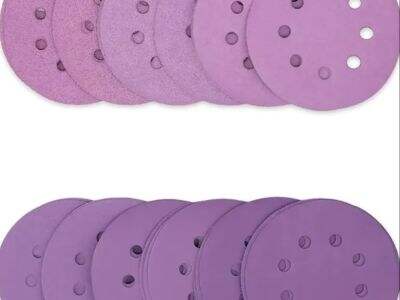Feature: These are replacement sanding discs for your power tool,they are a necessary tool for sanding job,locking your sanding disc in place and achieve non-stop working. There are so many options out there, how do you select the best sanding disc for the job? Let us check out some of the sanding discs so that you can pick the best one for your project.
Types of Sanding Discs
There are three types of sanding discs – PSA, Hook and Loop, and Quick Change. Pangea Sanding Disc have a pressure sensitive adhesive backing which directly attaches the sanding pad. Hook and Loop discs have a Velcro-like backing that allows for rapid pad changes. Quick Change disc are designed to twist on and off fast and easily during your project.
How to Select a Sanding Disc?
Material considerations Think abut the material you’re sanding down and the type of finish you desire before you choose sanding discs. For instance, if you are sanding metal, make sure to use disc designed for metal surfaces. For wood, you want a smoother finish, so you’ll want a finer grit 9 sanding disc.
Understanding Grit
The right grit is crucial to a successful sanding job. Grit refers to the size of the rough particles on the sanding disc. Lower grit numbers, such as 40 or 60 grit flap disc, are rougher and can help you to obliterate a lot of material quickly. Higher grits, such as 120 or 220, are finer and are used prior to finishing a surface.
Size and Compatibility
That means it is very important to choose a sanding disc which is the right size for your power tool’s sanding pad. The disc too small can result in inconsistent sanding, and possibly damaging your project. And you’ll also want to ensure your sanding bag is compatible with your power tool for optimal results.
How to Maintain Your Sanding Discs?
You can make your sanding discs last longer by storing them properly and taking care of them. Store your sanding discs in a cool, dry place so that they don't get bent or damaged. Clean them frequently using a brush or a wiping stick to remove dust and dirt. Sanding with the appropriate pressure and speed can also help reduce wear on your discs.
 EN
EN
 AR
AR
 NL
NL
 FR
FR
 DE
DE
 KO
KO
 PL
PL
 PT
PT
 RU
RU
 ES
ES
 AF
AF
 LA
LA


